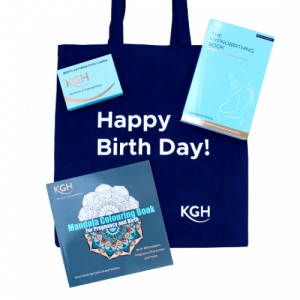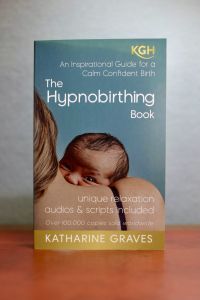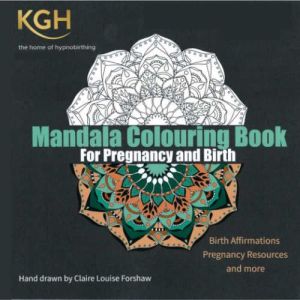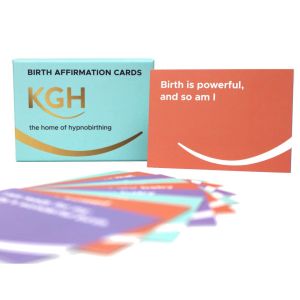 This could be called the ‘is my baby really coming?’ stage. Sometimes you are not quite sure. ‘Is it?’ ‘Isn’t It?’ ‘I think it may have stopped.’ ‘No, I really think this is it.’ ‘Yes, it definitely is.’ That is often the sort of feeling you have.
This could be called the ‘is my baby really coming?’ stage. Sometimes you are not quite sure. ‘Is it?’ ‘Isn’t It?’ ‘I think it may have stopped.’ ‘No, I really think this is it.’ ‘Yes, it definitely is.’ That is often the sort of feeling you have.
I taught KG Hypnobirthing to an Italian lady who, in early labour, went to watch her nieces swimming, did the laundry, had a beautician appointment. All pleasant things which did no dissipate energy that she would need later to give birth to her baby but kept her happily occupied. If you don’t happen to have nieces who are swimming at the appropriate time, have done the laundry the day before, and haven’t by coincidence booked a facial, there are other simple and positive ways you can approach this stage of labour.
Labour Cannot Be Divided Into Stages
The first thing to remember is that labour is not divided into stages, any more than the growth of a child is divided into stages, though we can look back later and see that she was a baby, and then a toddler, and then a little girl, etc. etc. At the time you cannot say from one day to the next, ‘Today she has become a toddler.’ The growth of a child is a natural continuum. The progress of labour is also a natural continuum. We give that progress labels for administrative convenience, but the reality is that it has its own rhythm and its own time frame which is different for everyone.
The important thing is to do what is right for you to help you begin labour with a calm mind and a relaxed body.
Keep Yourself Hydrated
Now and throughout labour make sure that you do not become dehydrated as neither the mind nor the body work well when you are dehydrated. The best drink of all is water. This doesn’t mean you should drink copiously. It simply means that it is a good idea to have a jug of water beside you with a glass that you can keep topped up whenever you wish. You know perfectly well that, if you have water on your desk at work, by the end of the morning you will probably have drunk it all. If it is not there, by the end of the morning you feel dehydrated and are gasping for a drink of water, because the water wasn’t beside you as a gentle reminder as you needed it. Avoid that happening when you are giving birth by having water available beside you all the time. It is a good idea to make sure you have a drinking straw available, then you can easily drink whatever position you find comfortable at that tmoment and if, for example, you are comfortable on your hands and knees labour doesn’t have to be disrupted for you to have a sip of water.
Eat light snacks whenever you feel like it to keep your energy up. You might feel like eating a banana (which helps to give you energy, produce serotonin (the calm hormone), reduces blood pressure, yoghurt, an egg, or whatever you fancy. Protein bars can be good too.
Keep Calm and Relax
You might feel excited in early labour that your baby is coming. Make a cup of tea, sit down, put your feet up and watch a funny or light-hearted movie. A funny film is the best possible tool for early labour; much better than any technical equipment. When you laugh you produce oxytocin, the hormone of calm, the hormone of love, and the hormone that facilitates the working of the uterine muscles in labour and so helps to facilitate an efficient labour and birth.
This is also the perfect time for your partner to read you one of the relaxations you have been practising during your pregnancy which by now will have a very profound effect.
You may like to add to the relaxing effect by using essential oil of lavender, the essential oil associated with relaxation. You can put a few drops in an essential oil diffuser. If you don’t have an oil diffuser, you can simply add a few drops to a small bowl of hot water and the aroma will dissipate into the atmosphere. You could add a few drops to a nice relaxing warm bath. You can put a few drops on a handkerchief or tissue and hold it to your nose. Lavender is an essential oil that can safely be applied topically. It also happens to be a wonderful antidote to burns. After your baby is born, just keep it beside your cooker and apply it to your hand if fat splatters onto you. You will find that there is no burn and no blister. The one thing NOT to do with essential oil of lavender is to put it in your birth pool. You might suddenly decide during labour that you no longer like the smell of lavender, and it takes a very long time to empty a pool and re-fill it again with fresh water.
Flower essences can also help you calm and relax. Probably the most appropriate is the 5 Flower Remedy by Healing Herbs (www.healingherbs.co.uk) . Rescue Remedy by Bach Flower Remedies is better known, but the 5 Flower Remedy contains the essence of exactly the same flowers but is more authentically made according to the original instructions of Dr Edward Bach. It can also be found in good quality health food shops and Neals Yard shops. Put a few drops in the water you are drinking and add some more every time you top it up.
Though essential oil of lavender and the 5 Flower Remedy are wonderful for support in labour, think of using them a little more broadly. If you feel stressed in late pregnancy, use them in exactly the same way as you would in early labour. If you feel tired and stressed after your baby is born because of the massive changes that are taking place in your life, use them again. They are safe remedies to help calm a fretful baby. Essential oil of lavender wafting through the atmosphere is very calming. 5 Flower Remedy is perfectly safe for babies. Just put a drop in a glass of water, dip your finger in it, and put it on your baby’s tongue. Or you can safely apply a couple of drops topically to his forehead.
Some people like to take the homoeopathic remedy arnica. This is a small, sweet pill that you allow to dissolve under the tongue. Take 200c, a higher potency than you would use for first aid purposes. It can be obtained online from Helios, the homoeopathic pharmacy. Take one when you go into labour, one when your baby is born, maybe one or two during labour if it is a longer labour, and one a day for a couple of days after the birth. Arnica is generally considered to be the remedy for bruiseing but it works so well for bruises because it supports any tissue that is under unusual stress. However gentle your labour, your body is required to work in a way that it is not accustomed to, so arnica can be extremely helpful. My observation is that, as it calms the body, it also helps to calm the mind. If you don’t use it in labour, take it on your next long haul flight, as it is a marvellous remedy for jet lag.
Time for Relaxations, Visualisations and Breathing Learnt in KGHypnobirthing Classes
Now is also the time to use the relaxations, breathing and visualisations you have learnt in your KGHypnobirthing class and practised with your partner each night. It can be very soothing to have your partner read you a visualisation, accompanied by gentle stroking. When you feel ready, start to use the ‘up’ breathing with the visualisations which by now are second nature to you. Remember that it is that lovely long, slow, gentle out breath that helps stimulate the production of oxytocin. Your partner’s voice prompting you with your visualisations can be even more soothing and comforting as it is the voice you have heard throughout your practice so it is associated with deep relaxation, and it is the voice that you know and love. The gentle back massage that you learnt in your KGH class can be very soothing too. Play the Colour and Calmness relaxation quietly in the background. By now it will trigger very deep relaxation after listening to it every night as you went to sleep during your pregnancy. This relaxation can also be used after your baby is born, and many mothers report that a fretful baby will settle well to the sound, because they have learnt to relax to that sound in utero as they experience their mother relaxing. Any gentle music that you enjoy can also have a soothing effect.
Find a Comfortable Position
Remember that you are most likely to be comfortable in a more upright and forward position. It might be kneeling on a cushion and rocking gently backwards and forwards on a birth ball. There are some women who sit on the loo as they naturally gravitate to a small safe place, as all mammals do in labour. Of course you can also lie down and have a rest, though lying down or semi-recumbent are likely to be the most uncomfortable positions in labour.
These are simply suggestions and what works for some mothers, will be different to others. When it comes to it, you will know exactly what to do. Nature has programmed you to know perfectly how to give birth, and you are the expert.









